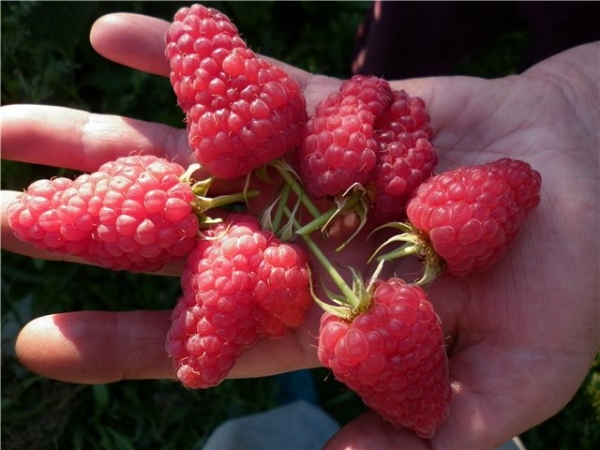It is difficult to meet a person who does not like to eat raspberries. But when it comes to large-fruited raspberries, fragrant, beshipnoy, then all gardeners dream of having such a plant, and no one will refuse from sweet berries for dessert.
AND this sort, having these characteristics, is called Maroseika.
Table of contents
Description of the raspberry variety Maroseyka
Maroseyka in the 70s of the previous century, Professor V.V. Kichina. It was at the Moscow Institute of Horticulture. The predecessor of this variety is the Scottish raspberry.
Maroseika received such qualities:
- resistance to disease;
- unpretentious nature of the plant;
- good yield;
- large fruits;
- a large percentage of sugar in the berry and its aroma.
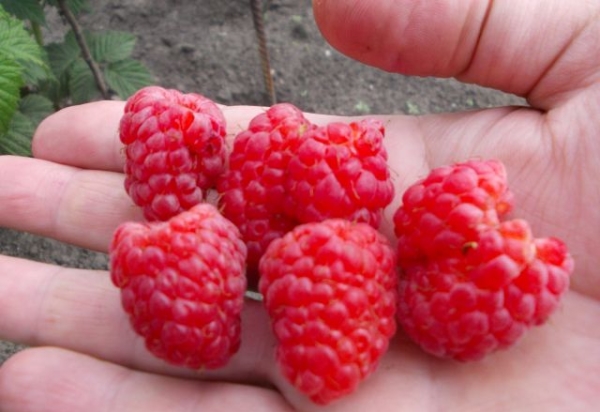
Today there are plenty to choose from among lovers of raspberries - there are many varieties on the market that are also worthy of attention, but Maroseyka is as attractive as many years ago.
This variety is recommended to grow amateur gardeners, and also for expansion of the range to small production. In this case, the climate should be suitable.
In the middle zone of Russia Maroseika is not winter-hardy and drought-resistant (has a superficial root system), therefore not suitable for industrial cultivation.
This is a seedless and large-fruited variety. medium early ripening - berries suitable for use at the beginning or middle of July. Crop harvested for 4-5 times, fruiting ends around the beginning of August.
The harvest is used traditionally: fresh, frozen, boiled, dried, boiled stewed fruit, prepared wine.
Fruits the plant once a year because, Maroseika variety is not characterized by reproducibility, but the crop is harvested at 4-5 kg from each plant. If you apply intensive feeding, the bush is able to give and 6 kg of berries.
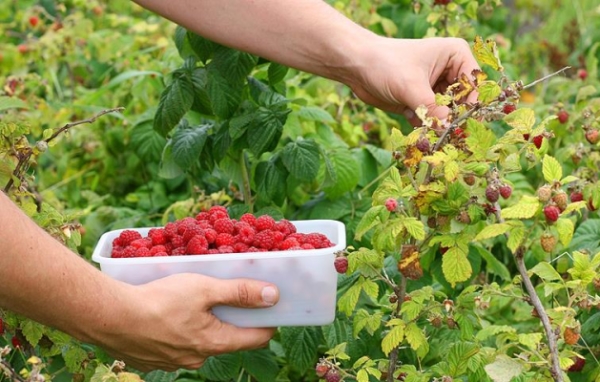
As for the total yield, the average is 150-200 kg per hundred, but due to the low winter hardiness it should be covered for the winter. Fruits every year, for the Moscow region is a very promising and productive variety.
The plant has long and medium length fruit branches, they are quite thick, on the shoots are from 2 to 4 orders of branching. On one branch can be 20 berries, and sometimes more.
The leaves are flat, twisted, with warty edges. They are large, dark green, and the plant has the appearance of a powerful bush.
Growing raspberry variety Maroseyka in a climate where freezing temperatures fall to around 30 ° C in winter and below, it should be covered for the winter. You can take:
- spandbond;
- straw;
- lapnik;
- mulch from plants.
Shelter work:
- The branches make a slope in one direction, and bend to the base of the plant, the top of the bush is tied.
- For shelter take any of the listed materials.
If this is not done in a harsh, cold climate, then even if the raspberries survive the winter, its yield will decrease.
Advantages and disadvantages
The raspberry variety Maroseika still surprises with many of the qualities that it has. Everyone likes its large-fruited, yield, wonderful aroma and taste of fruits.
This variety is not remontant, but it sometimes surprises gardeners with this quality - in some years at the ends of the branches the fruits ripen. This plant has good resistance to various raspberry diseases.
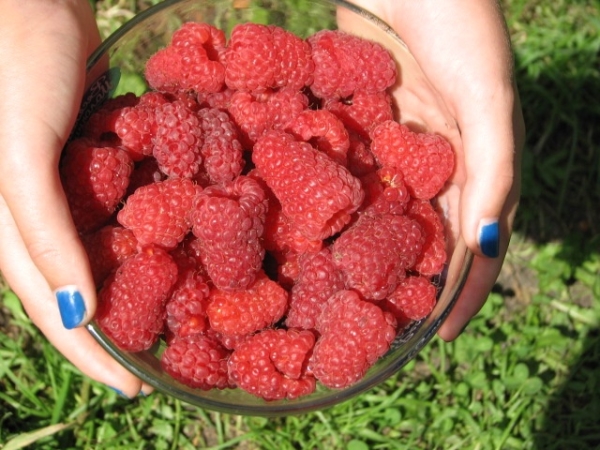
The disadvantages Maroseyki can be attributed the fact that the berries with long-term use of bushes are made small in size. The explanation for this phenomenon is the genetic instability of this variety.
There is this problem in the event that when plants are older than 10 years. Such a process is referred to as a decease or gene mutation.
In amateur gardening, this phenomenon is rarely present. So, if you want to have a sort of Maroseika, you should not worry about it - everything will be fine.
Characteristics of bushes and berries
Raspberry Maroseyka is a beautiful medium-growth sprawling bush, whose thick shoots are protected by a wax coating that keeps it from various fungi, droughts and frosts. It has a height of 1.5 to 1.8 m.
Bushes consist of powerful branches and shoots of replacement, as well as shoots. therefore multiply this variety is not difficult.
Do this by dividing the bush. Annual shoots are strong and resilient, have internodes 3-5 cm long.
On each bush grows about five shoots of replacement and ten shoots of root shoots. Even this variety does not conquer new territories.
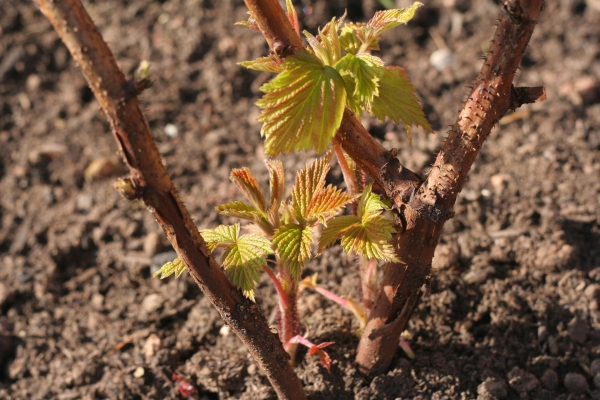
Berries on the raspberry bush Maroseika:
- weigh 4-12 grams;
- cone-shaped, light red in color, barely noticeable bluish bloom is present on them, but they are fused together in two;
- the pulp is sweet, with a slightly noticeable sour note with few seeds;
- aroma - pronounced;
- ripening, keep on plants and not showered;
- when fully ripe, they are well separated from the fruit bearing;
- the density is such that during transportation there are no difficulties.
This bush grew in a place lit by the sun, in a cozy place of the site where there was protection from the wind, it was fed with fertilizers.
Features of planting, growing and care
This raspberry variety though photophilous, but well tolerated and shadow. And yet, if you can choose a lighted place for young shoots, you should do so. Land for its planting should be fertile.
Landing Maroseyki done in rows, then tying is applied at a distance of 120 cm from the ground. For this purpose, the support is mounted with a strong tensioned wire.
Since the bush gives growth, the excess has to be removed so that the plant sends more juice to the formation of the crop.
To make fruiting more active, in the wells before planting raspberries put nitrogen and mineral fertilizers, as well as organic.
When it is time to bloom and start a new crop, granulated NPK fertilizers are applied. They monitor the presence of trace elements in sufficient quantity, especially potassium.

Beginner amateur gardeners need to know that more mass fruiting will be only next season.
After planting raspberry variety Nicety needs good care. It consists of complex agronomic techniques that help the plant feel good, and it will then thank the owner with a generous harvest of tasty and healthy berries.
You may be interested in the following articles:
Must follow some care guidelines. to Maroseyka fully endowed with a harvest:
- After planting, you need to periodically loosen the earth and weed.
- Watering is carried out in sufficient quantities and in a timely manner.
- Pruning of plants is done in spring in order to remove weak and frozen branches, and in autumn, bushes are prepared for winter. In the fall, pruned no later than half a month before frost. Then remove too young and weak branches.
- To prevent a large density of planting, cut out part of the shoots, leaving only 6-8 pieces.
- As noted, in time they make fertilizing with the necessary fertilizers.
- If necessary, plants protect from large frosts, covering them.
If there is a desire to strengthen the branching, young shoots pinch at a height of about a meter. This technique causes the formation of new side branches. The plant turns out more powerful and fruitful.
Diseases and pests
Raspberry variety Maroseyka distinguished by increased resistance against diseases and pests.
He, like other best varieties, bears fruit even when there is a disease on the branches or leaves, this does not affect the amount of the crop.
If you take care of her regularly, it will always please you with generous harvests.
